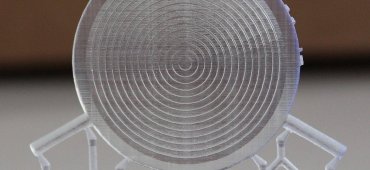ZIM-CarBoDia - New diamond drilling tools and self-optimization strategies for HSC drilling of laminates
Due to the growing implementation of lightweight constructions, the use of carbon fibre reinforced plastics (CFRP) is increasing in many industrial sectors such as the aircraft, automotive and wind power industries. The machining of CFRP components, in particular during drilling, is currently still causing problems with regard to the quality of the borehole and tool wear. In addition, there is the demand for higher tool life quantities with simultaneously higher clock speeds that drilling tools currently do not fulfil. In particular, the production of high-quality through holes in CFRP as well as in highly loadable laminated materials (stacks) such as CFRP titanium and CFRP aluminium represent an enormous challenge for the drilling process. Due to the layered structure of the workpieces, inadequate process control and insufficient use of the cutting materials, through-hole drilling has resulted in uneven quality on the entry or exit side of the bore, especially in the event of component vibrations due to insufficient support of the workpiece. These quality defects are unacceptable and require costly and expensive rework with documentation.
The overall goal of the cooperation project is the development of a new diamond drilling tool for one-sided drilling of CFRP materials. In addition to improving the quality of the drill, the aim is to increase productivity (cycle rate) as well as the tool life of the drills.
In addition to the development of a new tool, new process optimization strategies are being developed in parallel on the highly dynamic OWL UAS drilling demonstrator. Process monitoring is intended to ensure effective and targeted process parameter correction (speed, feed rate) in real time. In addition to a first cut, drill breakage and wear detection, the material transitions in coating materials should also be detected and incorporated into the process control.
Other indispensable CFRP-related development aspects that need to be researched are the transportation of the chips and the safe extraction of the hazardous drilling dust. The abrasive fibres of the CFRP materials lead to high tool wear. Therefore, the prevention of repeated machining is unavoidable to increase the tool life quantity. This is to be implemented with a special design of chip ejection on the tool, as well as an adapted suction technology.
Thus, finally, a drilling tool development and process technology with adapted suction technology is being developed, which offers a high market potential for common material combinations and load cases.







































































